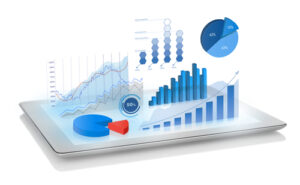Taking back control with reporting and analytics: Dirk Jonker, Founder & CEO, Crunchr
- 5 Min Read
Dirk Jonker, CEO & Founder, Crunchr, discusses the role of workforce reporting and people analytics in developing fact-based learning, and how these methodologies and tools are empowering the HR function.
- Author: Michael Hocking
- Date published: Apr 17, 2019
- Categories

What is the true potential of HR and how can we achieve it?
In this installment of our Tech Founders series, Dirk Jonker, CEO & Founder, Crunchr, discusses the role of workforce reporting and people analytics in developing fact-based learning, and how these methodologies and tools are empowering the HR function.
Why was it necessary to create Crunchr?
There is a big disconnect between the business and HR. Business want to know if workforce cost is aligned with future earnings potential, if people are fit for future work, if the workforce is engaged to outperform, if the top potentials are ready to lead tomorrow, and so on. Meanwhile, HR is struggling with asking the right questions, wastes valuable time to consolidates data from disconnected systems and working around definitions. And in the little time there is left, they try to make an Excel with a few graphs.
Because of this disconnect, the business feels HR is not always in control. At times where companies are in a permanent state of change, HR needs to be on top on things.
During 15 years of workforce reporting & people analytics projects, we developed methods and toolkits to help HR in many different areas with fact-based working. We decided to rebuild all these methods and toolkits from the ground up in such a way that HR can deliver (business) value fast. That is why we developed Crunchr.
Why is HR technology crucial to the success of a business?
To me the core of the HR profession is to drive the right behavior in the direction of where workforce has the biggest impact on business results. It’s about developing people, creating leaders, making sure that people are fit for their role and excited about what they do. I feel that for the last years, everybody tried to make HR into something they cannot be: organizing data, building dashboards, making deep analysis on why people are leaving, etc. This is exactly where technology can support HR in their core.
Think about how much data you have on workforce and organisations. A company of 7,000 employees has with just 2 years of history approximately close to 8 million data points. You want technology to structure this data for you and translate all these data points into relevant insight. An intelligent layer on top to help you to identify risks & opportunities.
Technology can do the heavy work for you in creating insight. But understand that just technology is not enough. It needs context from an HR professional (“Is 12.4% turnover bad?”). Therefore, we strongly believe in tech & touch.
What’s the most common misconception among organizations regarding HR technology?
The biggest misconception is that companies can develop a workforce reporting & analytics solution in-house. It often starts as a side-project from a data savvy colleague (often in compensation & benefits or in finance), who develops a nice-looking dashboard in PowerBI or Tableau. Everybody knows that the moment you present this first dashboard, stakeholders want to see more and more but the development capacity is often limited.
Meanwhile the enthusiasm for more insights is pushing the limits on the generic BI tooling. Work arounds are created, resulting in complex and non-reviewed code, inconsistent results and slow user experience. And at the end the data-savvy colleague moves on to a new role and nobody knows anymore how to maintain it. What we’ve seen too often.
Good HR leaders at least make an internal dashboard and sell firmly ‘no’ to stakeholders who want to see more. Great HR leaders source a specialized solution and focus on developing capabilities to work with workforce analytics, as they understand that technology can make their HR function smart, scalable and highly effective.
How can an organization most effectively implement new HR technology?
By starting with creating a plan which starts with the question: what are real business challenges that we can solve with HR expertise, how can HR technology support, how does success look like and stress test this with future scenario’s (followed by risk, mitigants and interdependencies).
In the execution, you want to show initial value real fast and focus on business value at the end of every delivery phase. This could be that everybody understands the longer-term dream, deliver the monthly workforce dashboard or discusses the first theme-based insights with local business leaders.
For a smooth adoption, create ambassadors who are trained in workforce analytics and who can easily relate to the business. Meanwhile keep measuring how all users work with the technology. At Crunchr, we implemented the heart model by Google and measure technology adoption in real time.
Which emerging technologies do you think will transform HR in the future?
Everybody will say that machine learning and artificial intelligence will transform HR in the future. I agree in the long run, but I also see that companies have very limited clean, structured and historic data available to even train intelligent models. So, artificial intelligence will have a large impact but not yet soon.
In the preparation phase towards artificial intelligence in HR, the emerging technology will be all about smart algorithms to bring data together in real time, clean this data and make this accessible for all the cool apps that are available nowadays. Second is that visualization techniques show interactively the context of metrics and insights. We experiment a lot with that to make HR trust their own data and start using it.









